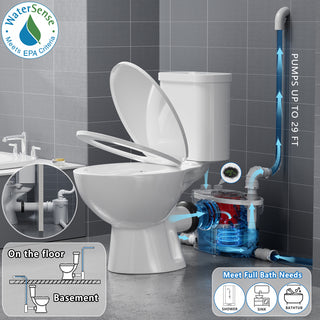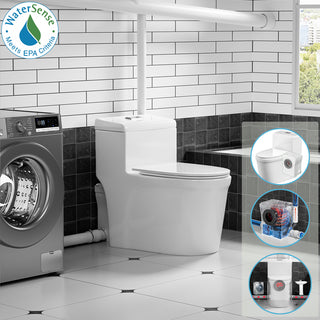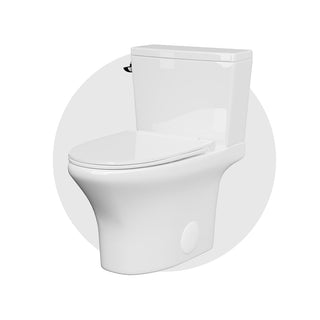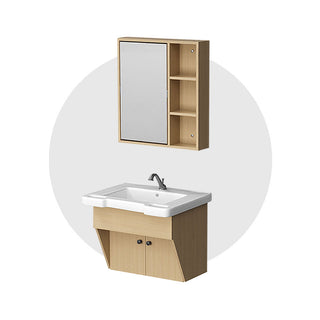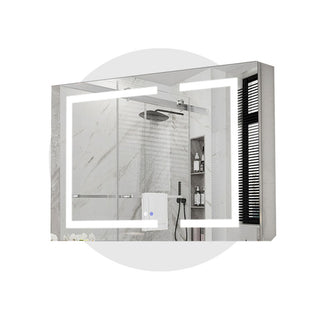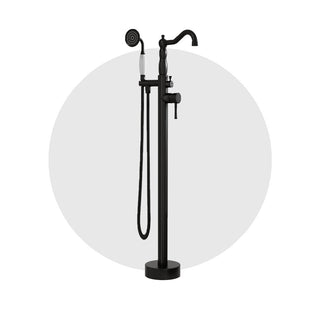When installing a macerator toilet, many homeowners ask: can the discharge pipe run horizontally before turning upward? The answer matters—especially if you’re trying to hide the pipework for a cleaner look, or if you need to route around walls, beams, or other obstacles.
The good news is: yes, a macerator pipe can go horizontal before going vertical—but it must be installed correctly. In this article, we’ll walk you through when and how this layout works, key rules to follow, and what mistakes to avoid for a smooth, efficient system.
How Does a Macerator Toilet Work?
Unlike traditional gravity-flush toilets, which rely on downward slope to move waste through large-diameter pipes, macerator toilets use a electric pump to forcefully eject waste. Inside the unit, solid waste is ground into a slurry, which is then pushed through small-diameter pipes—often as narrow as 3/4" to 2"—to a distant drain or main stack.
This active pumping system is what gives macerator toilets their flexibility in pipe routing, including the ability to go both horizontally and vertically—sometimes over significant distances or heights.
Can You Run the Discharge Pipe Horizontally First?
Yes, most macerator systems are designed to allow a horizontal run before the pipe goes vertical. In fact, many manufacturers—including Saniflo, Liberty Pumps, and Simple Project—explicitly support this configuration in their installation manuals.
Horizontal-then-vertical layouts are common in real-world installations, especially when:
- The toilet is far from the main drain or vent stack
- The only exit path involves running along a wall or under a floor
- You’re working with a split-level or basement configuration
However, just because it’s possible doesn’t mean any setup will work. Proper slope, pipe materials, and transition angles all matter.
Key Installation Guidelines for Horizontal-to-Vertical Discharge
To ensure smooth and efficient flow in a horizontal-then-vertical layout, keep the following best practices in mind:
1. Maintain a Proper Slope on Horizontal Runs
Even though a macerator uses pressure to move waste, horizontal sections still require a slight downward slope—typically 1/4 inch per foot (about 2%). This prevents waste from settling and allows residual liquids to drain back to the pump.
| Avoid completely flat runs or pipes that sag—these increase the risk of clogging and odor buildup.
2. Minimize Vertical Lift When Possible
While macerators can push waste upward, there’s usually a maximum vertical lift rating (often 12–18 feet, up to 36 feet, depending on the model). Keep vertical runs as short and direct as possible to preserve pump performance.
If your vertical section is very long, consult the manufacturer for pump sizing or alternate models.
3. Use Long Sweeping Elbows
When transitioning from horizontal to vertical, use long-radius bends rather than sharp 90-degree elbows. This reduces backpressure and makes the flow more gradual—important for both efficiency and noise control.
4. Choose the Right Pipe Material and Size
Use pressure-rated piping like Schedule 40 PVC or CPVC, not drain-only pipe. Stick to the recommended diameter—usually 3/4", 1", or 1.5" depending on the macerator model.
Too narrow and you’ll restrict flow. Too wide, and velocity may drop too much.
5. Don’t Skip the Vent
Macerators still need ventilation to prevent airlocks. Ideally, tie the unit’s vent port into your home’s main vent stack. Avoid relying solely on air admittance valves (AAVs), which may not function well under pressure variations.
When Is a Horizontal-to-Vertical Setup Necessary?
This layout becomes especially useful in tricky architectural scenarios, such as:
- Basement bathrooms where floor drains aren’t available
- Long horizontal distances to reach a drain or main stack
- Wall obstructions that require routing around structural features
- DIY installations in cabins, garages, or attics
In all these cases, having the flexibility to go horizontal before rising makes the project possible—something not achievable with traditional gravity-fed toilets.
Common Mistakes to Avoid
A few missteps can turn a functional layout into a plumbing headache. Watch out for:
- Horizontal pipes with no slope or sagging
- Too many sharp elbows in a short distance
- Exceeding max lift or run distance without verifying model specs
- Skipping venting or venting improperly
- Using undersized or incompatible pipe material
Proper planning and correct installation are critical for long-term performance.
Conclusion: Yes, But Do It Right
A macerator toilet’s discharge pipe can absolutely run horizontally before rising—but this flexibility comes with responsibility. Proper slope, materials, and ventilation are essential to avoid clogs and system failure.
If you’re unsure, always consult the manufacturer’s guidelines—or better yet, hire a licensed plumber who’s familiar with macerator systems.
👉 Want to learn more about how macerating toilets work and where they’re best used? Click here to explore our detailed guide.


